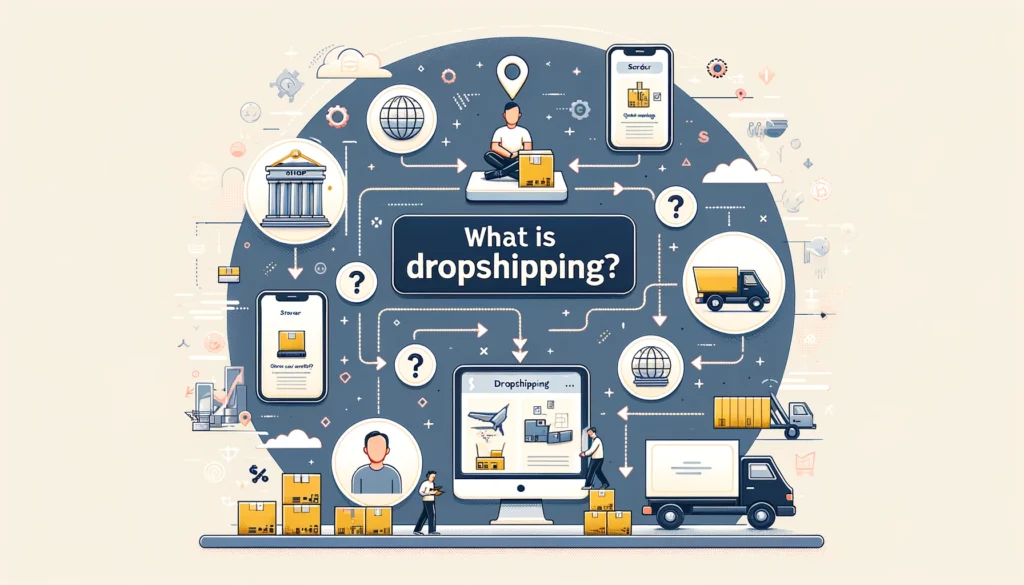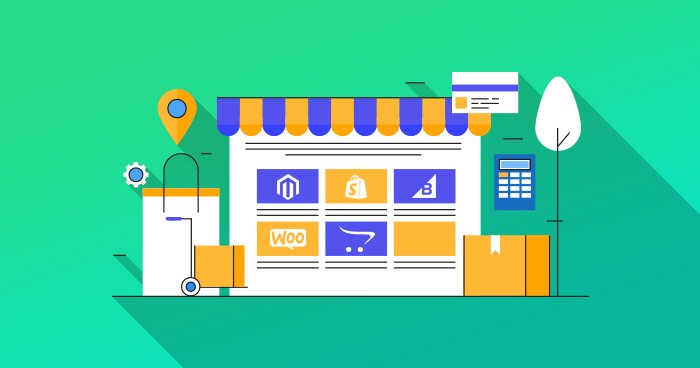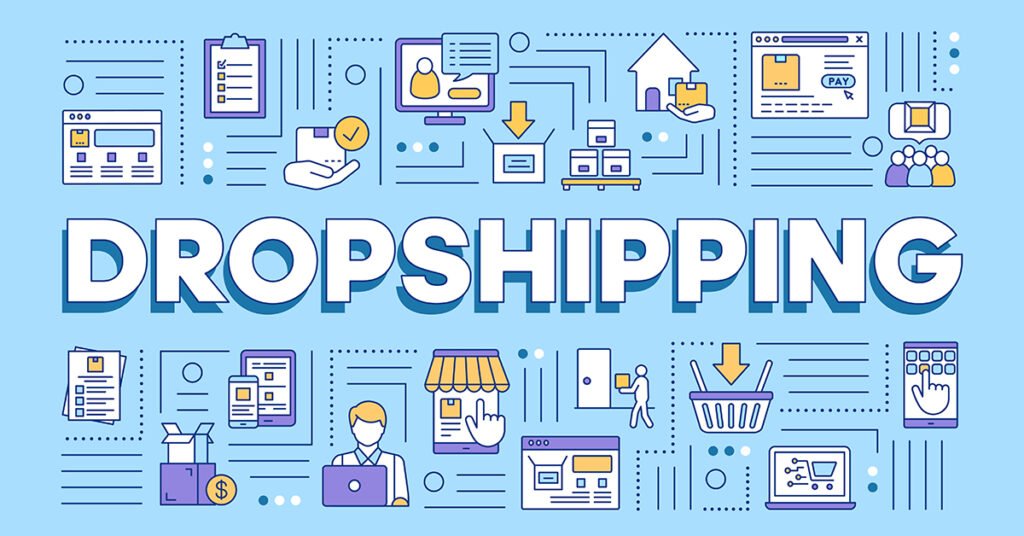Dropshipping: Starting Your Own E-Commerce Business
In recent years, dropshipping has emerged as a popular and accessible way to start an e-commerce business without the need for substantial upfront investment in inventory. This business model allows entrepreneurs to sell products to customers without ever handling the goods directly. Instead, the products are shipped directly from the supplier to the customer. If you’re considering diving into the world of dropshipping, this comprehensive guide will walk you through everything you need to know to get started.

Understanding Dropshipping
Dropshipping simplifies the traditional retail model by eliminating the need for inventory management, storage space, and fulfillment logistics. Here’s how it works:
- Find Suppliers: As a dropshipper, your first step is to find reliable suppliers who are willing to dropship their products. These suppliers can be found through online directories, industry trade shows, or by contacting manufacturers directly.
- Set Up Your Online Store: Once you’ve chosen your niche and suppliers, it’s time to set up your e-commerce store. Platforms like Shopify, WooCommerce, or BigCommerce offer user-friendly interfaces for building and customizing your store.
- List Products: Import product listings from your suppliers to your online store. Customize product descriptions, pricing, and images to match your brand’s style and appeal to your target audience.
- Market Your Store: Implement effective marketing strategies to drive traffic to your store. This includes SEO optimization, social media marketing, content marketing, and possibly paid advertising campaigns.
- Manage Customer Relationships: Provide excellent customer service to build trust and encourage repeat business. Handle inquiries, process orders promptly, and resolve any issues that arise professionally.

Finding Suppliers
Finding reliable suppliers is pivotal for the success of your dropshipping business. Here are key factors to consider when selecting suppliers:
Factors to Consider When Finding Suppliers:
1. Reliability:
- Track Record: Choose suppliers with a proven history of fulfilling orders accurately and on time. Look for reviews and testimonials from other dropshippers or businesses to gauge reliability.
- Communication: Ensure suppliers are responsive to inquiries and proactive in providing updates on order status and inventory levels.
2. Product Quality:
- Sample Orders: Request samples to assess the quality of products firsthand. This helps in evaluating product materials, craftsmanship, and packaging.
- Customer Feedback: Check customer reviews and feedback to gauge satisfaction levels with the product quality. High-quality products lead to fewer returns and higher customer satisfaction.
3. Competitive Pricing:
- Profit Margins: Compare pricing across different suppliers to maximize your profit margins. Consider factors such as product cost, shipping fees, and any additional charges.
- Volume Discounts: Inquire about volume discounts or wholesale pricing options to further optimize costs and competitiveness in the market.
4. Shipping Options:
- Fast Shipping: Look for suppliers who offer fast and reliable shipping options. Timely delivery enhances customer satisfaction and reduces potential issues with shipping delays.
- Tracking: Ensure suppliers provide shipment tracking information so you can keep customers informed about the status of their orders.
5. Communication:
- Response Time: Effective communication is crucial for resolving issues promptly and maintaining a good working relationship with suppliers.
- Language and Time Zone: Consider suppliers who are fluent in your language and operate within a similar time zone for easier communication and coordination.
Steps to Find Suppliers:
Finding reliable suppliers for your dropshipping business involves strategic steps to ensure product quality, competitive pricing, and efficient fulfillment. Here’s a detailed guide on how to find suppliers:
1. Online Directories:
- Utilize Platforms: Use reputable online directories such as Alibaba, Oberlo, SaleHoo, or ThomasNet to search for suppliers. These platforms categorize suppliers based on product categories, location, and other criteria.
- Search Filters: Narrow down your search using filters such as product type, minimum order quantity (MOQ), and shipping options to find suppliers that meet your specific requirements.
- Supplier Profiles: Review supplier profiles to assess their credibility, product range, customer reviews, and certifications. Look for suppliers with a track record of reliability and positive feedback from other businesses.
2. Trade Shows and Exhibitions:
- Attend Industry Events: Participate in industry-specific trade shows, exhibitions, or conferences relevant to your niche. These events provide opportunities to network directly with manufacturers, wholesalers, and suppliers.
- Networking Opportunities: Engage in conversations with exhibitors, gather product samples, and exchange contact information to follow up after the event.
- Discover New Products: Trade shows often showcase new products and trends, allowing you to explore potential additions to your product line and stay ahead in the market.
3. Direct Contact:
- Reach Out: Visit manufacturers’ websites directly or contact them through the information provided in online directories or trade show exhibits.
- Inquire About Services: Initiate communication by requesting product catalogs, pricing lists, and terms of service. Clarify any doubts regarding shipping policies, payment methods, and order fulfillment processes.
- Evaluate Responsiveness: Assess suppliers based on their responsiveness to your inquiries and willingness to provide detailed information promptly.
- Establish Relationships: Building a rapport with suppliers through direct contact can lead to more personalized service, customized solutions, and potential long-term partnerships.
Tips for Evaluating Suppliers:
1. Conduct Due Diligence:
- Research Thoroughly: Begin by researching potential suppliers comprehensively. Check their business reputation through online reviews, testimonials, and forums. Look for any red flags or complaints from other businesses.
- Certifications and Standards: Verify if the supplier holds relevant certifications such as ISO certifications for quality management or industry-specific standards. These certifications indicate adherence to quality and operational excellence.
- References: Seek references from other businesses or partners who have worked with the supplier. Contact them to gather insights into their experience, reliability, and overall satisfaction with the supplier’s services.
2. Negotiate Terms:
- Discuss Pricing: Negotiate pricing to ensure it aligns with your budget and allows for competitive pricing in the market. Inquire about bulk discounts or special rates for recurring orders.
- Minimum Order Quantities (MOQs): Clarify the supplier’s MOQ requirements. Determine if they are flexible with MOQs, especially when starting small or testing new products.
- Return Policies: Understand the supplier’s return policies regarding defective or damaged goods. Clear terms on returns and replacements are essential to manage customer expectations and protect your business from potential losses.
- Payment Methods: Discuss accepted payment methods and terms. Ensure they align with your financial capabilities and preferences, whether it’s through credit terms, wire transfers, or other secure payment options.
3. Build Relationships:
- Establish Trust: Cultivate a relationship based on trust and transparency with your suppliers. Open communication and honesty can prevent misunderstandings and foster a collaborative partnership.
- Regular Communication: Maintain regular communication with your suppliers to stay updated on inventory availability, order processing times, and any changes in product offerings or pricing.
- Feedback Mechanism: Provide constructive feedback to suppliers regarding product quality, packaging, or delivery times. This helps them improve their service and ensures your business receives consistent quality.
- Long-term Partnerships: Aim to build long-term partnerships with suppliers who demonstrate reliability, flexibility, and a commitment to mutual growth. A strong supplier relationship can lead to preferential treatment, better service, and priority during peak seasons.

Setting Up Your Online Store
1. Choose an E-commerce Platform:
- Selecting the Right Platform: Choose an e-commerce platform that suits your business needs and budget. Popular options include Shopify, WooCommerce (built on WordPress), BigCommerce, and Magento. Consider factors such as ease of use, scalability, available features, and integration capabilities.
- Platform Features: Evaluate platform features like inventory management, order processing, SEO tools, marketing integrations, and customer support to ensure they align with your business requirements.
2. Design Your Store:
- Choose a Professional Theme: Select a professional theme or template that reflects your brand’s identity and appeals to your target audience. Most e-commerce platforms offer a variety of themes that can be customized to match your brand colors, logo, and overall aesthetic.
- Customization: Customize the theme to create a cohesive brand experience. Customize fonts, colors, layout, and imagery to align with your brand identity and enhance user experience.
- Navigation: Ensure your store’s navigation is intuitive and user-friendly. Organize products into categories and subcategories to make it easy for customers to find what they’re looking for.
3. Optimize for Mobile:
- Responsive Design: Optimize your store for mobile devices as a significant portion of online shoppers use smartphones and tablets. Ensure your store is responsive, meaning it adapts seamlessly to different screen sizes and resolutions.
- Mobile-Friendly Features: Prioritize mobile-friendly features such as easy navigation, fast loading times, and simplified checkout processes to enhance the mobile shopping experience.
4. Payment Gateways:
- Secure Payment Options: Set up secure payment gateways to accept payments from customers. Popular payment gateways include PayPal, Stripe, Square, and Authorize.Net. Ensure the gateway supports various payment methods such as credit cards, debit cards, and digital wallets.
- SSL Certificate: Install an SSL certificate on your website to encrypt sensitive customer information and provide a secure browsing and shopping experience.
- Payment Processing Fees: Review and compare payment processing fees charged by different gateways to choose the most cost-effective option for your business.
Additional Considerations:
- Product Listings: Import product listings from your suppliers and optimize them with clear, compelling descriptions, high-quality images, and accurate pricing.
- SEO Optimization: Optimize your store for search engines (SEO) by using relevant keywords, meta tags, and descriptions. This helps improve your store’s visibility in search engine results and attract organic traffic.
- Legal Compliance: Ensure your online store complies with legal requirements such as privacy policies, terms of service, and GDPR (if applicable) to protect both your business and customers.
Marketing Strategies
Effective marketing strategies are crucial for driving traffic and sales to your dropshipping store. Here’s a comprehensive guide on various marketing strategies you can implement:
1. SEO (Search Engine Optimization):
- Optimize Product Pages: Use relevant keywords in product titles, descriptions, and meta tags to improve visibility on search engine results pages (SERPs).
- Content Optimization: Create informative product descriptions and detailed specifications that include keywords naturally.
- Blog Content: Publish blog posts related to your niche with SEO-optimized content. Address common questions, provide solutions, and incorporate keywords to attract organic traffic.
- Backlinks: Build backlinks from reputable websites and guest blogging opportunities to improve domain authority and search engine rankings.
2. Social Media Marketing:
- Platform Selection: Identify the social media platforms where your target audience spends their time. Platforms like Instagram, Facebook, Pinterest, and Twitter are popular choices.
- Visual Content: Use high-quality images and videos to showcase your products. Encourage user-generated content (UGC) by reposting customer photos or reviews.
- Engagement: Interact with your audience by responding to comments, messages, and mentions promptly. Host giveaways, contests, or polls to increase engagement.
- Influencer Partnerships: Collaborate with influencers or micro-influencers who align with your brand to reach a wider audience and build credibility.
3. Content Marketing:
- Create Valuable Content: Develop informative and engaging content such as how-to guides, product reviews, or tutorials related to your products or industry.
- Email Newsletters: Build an email list and send regular newsletters with valuable content, product updates, promotions, and exclusive offers to engage subscribers.
- Guest Blogging: Write guest posts for industry blogs or publications to reach a new audience and establish authority in your niche.
4. Paid Advertising:
- Google Ads (PPC): Launch pay-per-click (PPC) campaigns on Google Ads to target specific keywords related to your products. Monitor and optimize campaigns based on performance metrics like click-through rates (CTR) and conversion rates.
- Facebook Ads: Create targeted ads on Facebook and Instagram based on demographics, interests, and behaviors of your potential customers. Use retargeting ads to reach users who have visited your website but didn’t make a purchase.
- Budget Management: Set a clear budget for paid advertising campaigns and track return on investment (ROI) to ensure profitability.
Integration and Optimization:
- Analytics: Use analytics tools like Google Analytics to track website traffic, sales conversions, and customer behavior. Analyze data to refine marketing strategies and optimize campaign performance.
- A/B Testing: Experiment with different marketing tactics, ad creatives, and landing pages to identify what resonates best with your audience and improves conversion rates.
- Customer Feedback: Collect and analyze customer feedback to understand preferences, improve product offerings, and enhance overall customer experience.
Managing Customer Relationships
Providing excellent customer service is key to building a loyal customer base:
1. Respond Promptly:
- Timely Responses: Answer customer inquiries, messages, and comments promptly, ideally within 24 hours. Use automated responses or templates for common queries to streamline communication.
- Professional Communication: Maintain a polite and professional tone in all interactions with customers, whether through email, social media, or live chat.
2. Order Tracking:
- Provide Updates: Keep customers informed about their order status from processing to shipment and delivery. Send automated emails with tracking information once orders are dispatched.
- Customer Notifications: Notify customers of any delays or issues with their orders promptly. Proactive communication can help manage expectations and reduce dissatisfaction.
3. Handle Returns Efficiently:
- Clear Return Policy: Establish a clear and transparent return policy that outlines conditions for returns, exchanges, and refunds. Display this policy prominently on your website.
- Streamlined Process: Simplify the return process for customers by providing clear instructions and a hassle-free method to initiate returns. Aim to process returns promptly upon receipt of returned items.
4. Collect Feedback:
- Customer Reviews: Encourage customers to leave reviews and feedback after purchasing. Display reviews on your product pages to build trust and credibility with potential buyers.
- Feedback Surveys: Send follow-up emails or surveys to gather insights into customer satisfaction, product preferences, and areas for improvement.
- Act on Feedback: Use customer feedback to make informed decisions about product offerings, service improvements, and overall business strategies.
Additional Tips:
- Personalization: Personalize customer interactions by addressing them by name and referencing past purchases or preferences when appropriate.
- Customer Appreciation: Show appreciation to loyal customers through exclusive offers, discounts, or loyalty programs.
- Social Media Engagement: Monitor and respond to customer feedback and inquiries on social media platforms promptly to build community and enhance brand reputation.
- Continuous Improvement: Continuously review and refine your customer service processes based on feedback and analytics data to enhance overall customer experience.
Conclusion
Starting a dropshipping business can be a rewarding venture with the right preparation and execution. By finding reliable suppliers, setting up a user-friendly online store, implementing effective marketing strategies, and prioritizing customer relationships, you can build a successful e-commerce business. Stay adaptable and continuously refine your approach to stay competitive in the ever-evolving e-commerce landscape. Good luck on your dropshipping journey!








